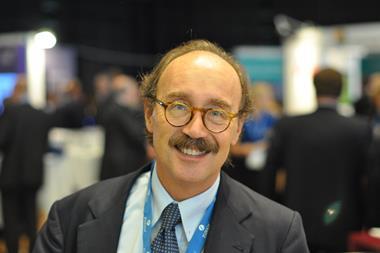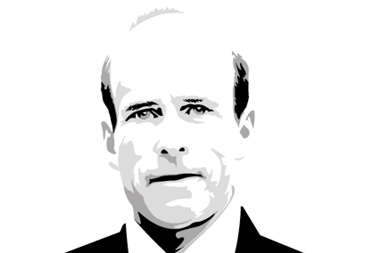Despite the hype the UK’s Corporate Manslaughter Act aint up to much, says Sue Copeman
The Zeebrugge ferry disaster in 1987 which killed 187 people and the Clapham Junction rail crash the following year, in which 35 people died and around 500 were injured, lent strength to the idea in the UK that the then existing penalties for organisations were insufficient and failed to lay the blame at the door of the people within those organisations who should be held personally accountable. Out of this was born the Corporate Manslaughter Act.
The draft legislation started with high hopes, in particular tackling the knotty problem of prosecuting and punishing culpable people within an organisation who could actually be perceived as responsible and delegated managers for that organisation, and who therefore should face personal charges. As Sally Roff, partner and head of the safety, health and environment group at national commercial law firm Beachcroft LLP, says, “The public wanted to see the top people in the dock which under common law was difficult, requiring the conviction of an individual person for gross negligence manslaughter and for that person to be so senior within the company that he or she represented its ‘directing mind’.”
However, in the many years that intervened before the Corporate Manslaughter Act came into force in April 2008, its original intent was watered down considerably. The original aim of getting top management into the dock disappeared. Directors or other senior executives cannot be prosecuted under the Act although existing health and safety offences and gross negligence manslaughter (which carries a maximum sentence of life imprisonment) continue to apply to individuals. Indeed, the Health and Safety (Offences) Act 2008 which came into force in 2009 makes imprisonment of culpable individuals an option for more health and safety offences than before in both the lower and higher courts. Under the Corporate Manslaughter Act, an organisation can only be found guilty if the way in which its activities are managed or organised by its ‘senior management’ is a substantial element in its gross breach of duty.
To all intents and purposes, the only elements which distinguish the Act from current health and safety legislation are the penalties involved. These include unlimited fines, remedial orders (requiring correction of any management failures that led to a death) and publicity orders, basically requiring an organisation to publicly own up to its conviction, the circumstances that led to it, the amount of the fine and the terms of any remedial order.
If the public demand to name and shame individuals has disappeared, at least it appears that the Act has the power to name and shame organisations. According to Roff: “When the Act was first talked about, a maximum of 10 or 12 prosecutions each year was contemplated. It was always going to be used sparingly – presumably for the most serious cases and the organisations that would suffer most reputationally from the stigma of corporate manslaughter, for example, a large company, health authority or police service.” So it is somewhat surprising that the first case to be brought under the Act involves a relatively small company, Cotswold Geotechnical Holdings Ltd, in relation to the death of its employee, junior geologist Alexander Wright, on 5 September 2008.”
Says Roff: “At a time when there is so much scrutiny over the effective use of public funds, one wonders what is to be gained from pursuing a ‘shell’ company. There is little prospect of a significant fine being levied on any conviction and it is unlikely that there will be any meaningful guidance on how the Corporate Manslaughter Act is to be interpreted, particularly in terms of who, for the purpose of the Act, would fall into the definition of ‘senior management’. Cotswold Geotechnical Holdings was a very small company and it is unlikely that there will be any detailed consideration of who constituted its senior management.”
The trial for corporate manslaughter of Cotswold Geotechnical Holdings has been adjourned until January 2011, and the charges of gross negligence manslaughter against its managing director, Peter Eaton, have been dropped, due to concerns regarding his health
Jeremy Cole, account manager in Mitsui Sumitomo Insurance’s risk engineering team, agrees with Roff that it’s hard to understand why the Crown Prosecution Service has selected this case as the launch pad of corporate manslaughter prosecution. “It can’t answer any of the burning questions such as what the Act means by ‘senior management’.”
He adds: “In investigating potential corporate manslaughter offences, the police appear to be setting the barrier fairly low, for example investigating supervisors, line managers and team members, rather than operational and factory managers who might realistically constitute senior management.”
However, Cole warns that, despite the criticisms levied at the Corporate Manslaughter Act, risk managers can’t afford to ignore it, principally of course because no organisation wants fatalities at work to occur. Also an investigation can be pretty unpleasant. “If the worst happens, risk managers and the like have every chance of being treated like possible criminals.”
And he stresses that, despite this inauspicious start to prosecution under the Act, at some point a large organisation could be prosecuted, fined perhaps millions of pounds, and suffer all the reputational damage that comes out of that.
Roff suggests that the thinking behind the Corporate Manslaughter Act, which represents a tougher approach to companies that breach health and safety rules, does not sit comfortably with Lord Young’s health and safety review published in October, which advocates less bureaucracy in relation to health and safety.
It seems that UK is finding it hard to get to grips with the potentially conflicting aims of satisfying public demand to punish criminally negligent companies and encouraging commercial expansion. But in the meantime, the formerly anticipated “tiger” of the Corporate Manslaughter Act has yet to show that it has any real teeth.



















